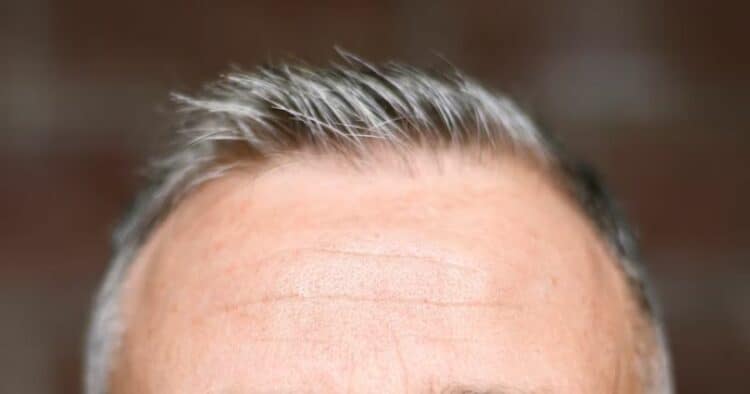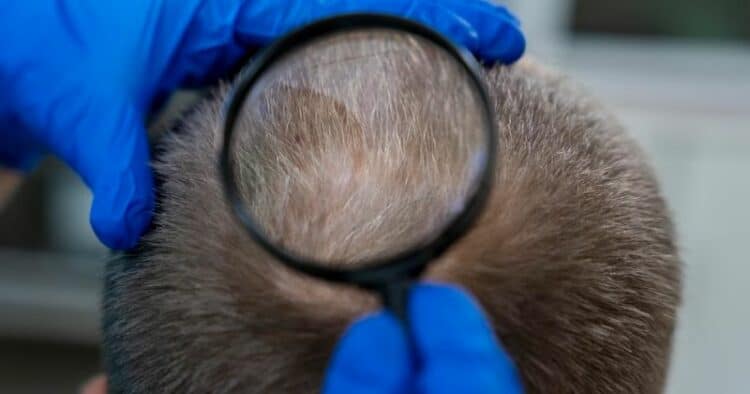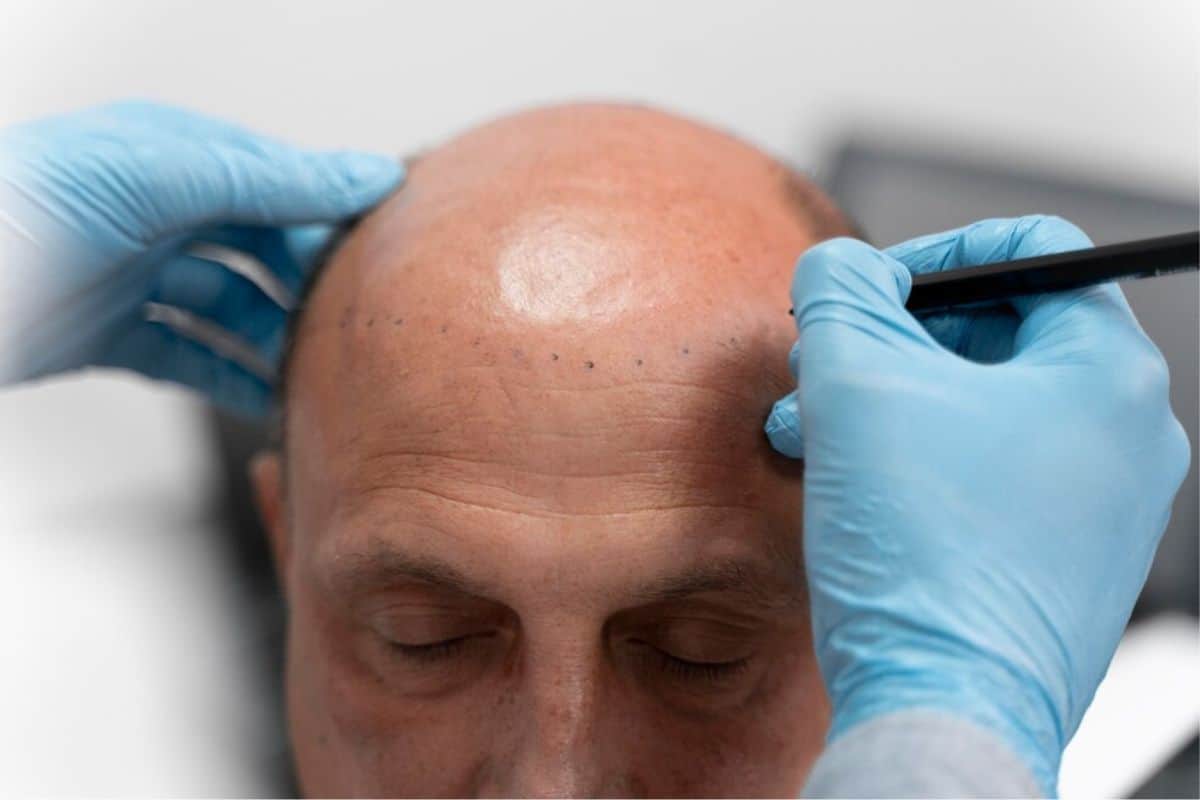Scalp micropigmentation is an increasingly popular hair loss solution that has gained traction recently. However, many people wonder whether scalp micropigmentation suits individuals with grey hair. This is a valid concern for many people struggling with aging. In this blog post, we will explore the compatibility of scalp micropigmentation with grey hair and provide you with all the information you need to make an informed decision.
If you’re experiencing hair loss and greying, you know how frustrating it can be to feel like you’re losing your youthful appearance. It’s not uncommon for people to feel like their hair is their crowning glory, and when it starts to fade, it can be a blow to their confidence.
The challenges of dealing with hair loss and grey hair can be compounded by the fact that many hair loss solutions are unsuitable for individuals with grey hair. In this blog post, we will delve into the difficulties of finding a hair loss solution that works for individuals with grey hair and explore how scalp micropigmentation can help.
How does scalp micropigmentation work with grey hair?

What happens to scalp micropigmentation treatment when your hair turns grey?
Scalp micropigmentation (SMP) is a technique that uses tattooing to simulate a fuller head of hair or a freshly shaved look. A common question is how SMP interacts with grey hair. The good news is that grey hair doesn’t significantly affect SMP’s effectiveness.
All shaved heads, regardless of hair color, have a grey tone. Moreover, the pigments used in SMP fade over time, blending more seamlessly with grey hair. Keeping your hair at the right length after SMP treatment is crucial to get the best results with grey hair.
Most practitioners recommend shaving the head once or twice weekly to maintain a clean-cut look. Regular touch-ups are also necessary to mimic the appearance of real hair. While SMP practitioners rarely encounter any issues with treatments looking unnatural when clients’ hair turns grey, addressing any concerns with touch-ups that may be lighter in hair tone to complement the client’s new look is crucial.
“SMP treatment is a viable option for those with grey hair. Grey hair does not significantly impact the treatment’s effectiveness, and regular touch-ups can help maintain the desired appearance.”
Following the recommended aftercare instructions and consulting with a qualified SMP practitioner is essential to achieve the best results. SMP can help individuals feel more confident and accepting of the natural process of aging.
Should I Be Worried About Going Grey?
Going grey is a natural process that occurs with age as melanin production decreases. Melanin is the pigment that gives hair its color, and as the body produces less melanin, hair can turn grey or white. However, premature greying can also occur due to factors such as genetics or stress.
While going grey is a normal part of aging, it can concern those experiencing hair loss or thinning, affecting self-esteem and confidence. Scalp micropigmentation (SMP) is a hair loss treatment that involves creating the appearance of tiny hair follicles using micro-needles. SMP can still be effective for those with grey hair, as the treatment can be tailored to match the natural hair color.
However, it is important to note that the results may not be as noticeable on grey hair as they would be on darker hair. Overall, going grey does not necessarily impact the effectiveness of SMP treatments.
What if I Have SMP Once I’ve Gone Completely Grey?

Scalp micropigmentation (SMP) is an effective solution for individuals with completely grey hair who want to regain their follicle luster. The main challenge with grey hair is that it can be difficult to match the pigment to the natural hair color. However, SMP can be tailored to match the greyish tone of shaved short hair, which is what the treatment is based on. The key to achieving the best results is to shave the head regularly, which will also help maintain the SMP treatment’s appearance.
The process involves the application of tiny dots of pigment to the scalp, which creates the illusion of hair follicles. The treatment is non-invasive and requires no downtime. While the pigment may fade over time, it will blend naturally with grey hair. Depending on the individual, touch-up sessions may be required every five to eight years. Overall, SMP is an excellent solution for those wishing to disguise grey hair and restore confidence in their personal and professional lives.
Examples of scalp micropigmentation and grey hair

Scalp micropigmentation (SMP) is a hair loss solution that uses black pigment to create the illusion of short hair follicles. While it is compatible with various hair types and colors, the main concern with SMP is how it can address grey hair. SMP can still be effective for individuals with grey hair as long as certain techniques are used.
The first technique involves cutting the hair to a short buzzed length. Grey hair roots are darker, and by cutting the hair short, the grey hair appears darker and blends better with the pigment. The second technique involves using a gray-scale pigment that can be adjusted to blend with lighter hair tones. A lighter dilution can be used to blend the pigment into existing grey hairs.
However, there are potential challenges and limitations to SMP for grey hair. Touch-up sessions may be necessary to maintain the desired look, as the pigment may fade. Proper color matching is also important to avoid an unnatural or dramatic appearance.
That is why consulting with a trusted and proven expert is important. Despite these challenges, SMP can be a long-lasting and natural-looking solution for grey hair, providing individuals with renewed confidence and a youthful appearance.
Graying Before Your First SMP Treatment

There’s no need to worry if you have grey hair before your first Scalp Micropigmentation (SMP) treatment. The SMP procedure can help blend in your grey hairs using specific inks to achieve a natural look. During your SMP procedure, the shades of ink chosen will be matched against the hair color of your follicles when shaved to ensure the best possible outcome.
Choosing the right pigment color to match your hair follicles and achieve a seamless blend is important. The treatment may take a few hours, depending on the extent of your hair loss and the desired look you want. SMP treatments can last over 5 years before needing a touch-up, and when the pigment starts to fade, it can blend in naturally with grey hair. Overall, SMP is an excellent solution for those with grey hair who want to achieve a fuller, natural looking head of hair.
Graying After SMP
Scalp micropigmentation (SMP) is a procedure that can help disguise gray hair, especially for those who are prematurely graying. SMP involves buzzing the hair down to half or zero guard and using ink to match the color of the remaining hair to achieve a natural look. After treatment, Gray or white hair does not appear gray because the root hair is relatively darker than the white strand.
The graying process is mainly influenced by genetics and can occur at any age, but most people have some gray hair by the age of fifty. Stress levels may also play a role. If the hair turns gray after SMP, a touch-up session may not be necessary for five to eight years. Regular maintenance and touch-up procedures are recommended to maintain the desired look.
Conclusion
Wrapping up, Scalp Micropigmentation and Grey Hair can work together effectively. If you’re dealing with hair loss and have grey hair, this could be a solid solution for you. Understanding the process and picking a skilled practitioner is key.
Why not take the first step towards a fuller head of hair? Consider scheduling a consultation to see if scalp micropigmentation is right for you.
FAQ
Does scalp micropigmentation work on grey hair?
Scalp micropigmentation (SMP) is effective on grey hair. It uses diluted black pigment to mimic short hair follicles, blending with the natural hair color for a natural look. Keeping hair short is advised, as roots are darker and hair appears greyer with length. SMP, lasting 4-6 years, fades naturally, aligning with the evolving shades of grey or white hair.
How will SMP look when I’m old?
Scalp Micropigmentation (SMP) is designed to age gracefully with you. While it may fade over time, periodic touch-ups can keep it looking fresh. As you age, the style can be adjusted to ensure a natural and age-appropriate appearance.
Does SMP work on white hair?
Scalp micropigmentation (SMP) is effective on white or grey hair. Color matching is done to identify the most suitable pigment shades to use in the treatment. The pigments chosen are matched against the gray appearance of hair follicles on shaved scalps for a natural look. The best scalp artists work in a gray monochromatic color scale by diluting black pigment to match hair/skin tone.
Am I too old for scalp micropigmentation?
No, you’re never too old for scalp micropigmentation. This non-surgical procedure is suitable for individuals of any age experiencing hair loss or thinning. Scalp micropigmentation can effectively enhance the appearance of your hairline, irrespective of your age.


